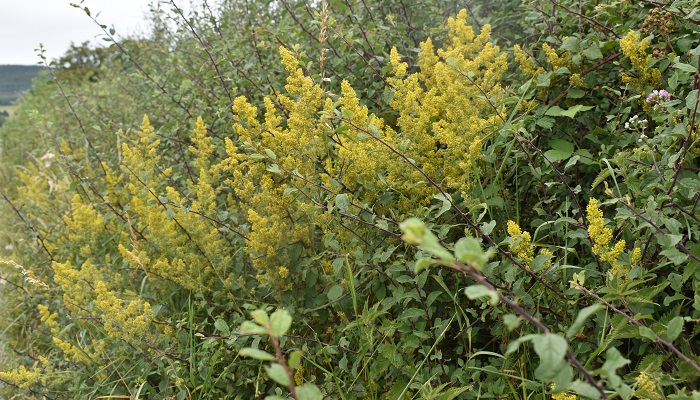14 August 2022
Growing wild – Privet and Lady’s Bedstraw

Catherine Keena, Teagasc Countryside Management Specialist takes a closer look at some of our native Irish biodiversity to look out for in the countryside. Here she shares some interesting facts of nature about Privet and Lady’s Bedstraw
Privet

Look out for privet, a semi-evergreen shrub in rural hedges with the leaves turning colour in autumn and falling in winter. The privet in gardens is not the native species, but a Japanese introduction, with leaves closer together. Leaves and inflorescences of the native species are downy, those of garden privet are not. The compact panicle of flowers have a heavy, sweet scent, which is even stronger at dusk, at which time the white colour is most vivid and moths are on the wing and use the funnel-like shape of the little flowers to pollinate privet. The privet hawkmoth feeds on the leaves.
Lady’s Bedstraw

Look out for lady’s bedstraw with golden yellow, tiny, star-shaped flowers clustered on branched, square stems. It differs from other bedstraws which are mostly white. Honey smelling flowers attract short-tongued insects for pollination. Its names refers to Our Lady and to its uses. As flowers dry out, they develop a sweet smelling alcohol called coumarol – same as in fresh-cut grass, so bedstraws were used to scent linen and stuff matrasses. Flowers make a yellow dye and roots a red dye. It was also used in folk medicine and to curdle milk for cheese. Found on lime rich soils and dry, sunny, roadside banks, lady’s bedstraw is part of our native Irish biodiversity.
See previous Growing Wild articles below:
- Growing Wild – dandelion and greater stitchwort
- Growing Wild – willow, primrose and lady’s smock
- Growing Wild – whitethorn and cow parsley
- Growing Wild – bluebells and guelder rose
- Growing wild – Honeysuckle and Foxglove
- Growing Wild – Elder and Ragged Robin
- Growing wild – dog rose and meadowsweet
Keep an eye on Teagasc Daily for another Growing Wild next month. Learn more from Teagasc about Biodiversity & Countryside
